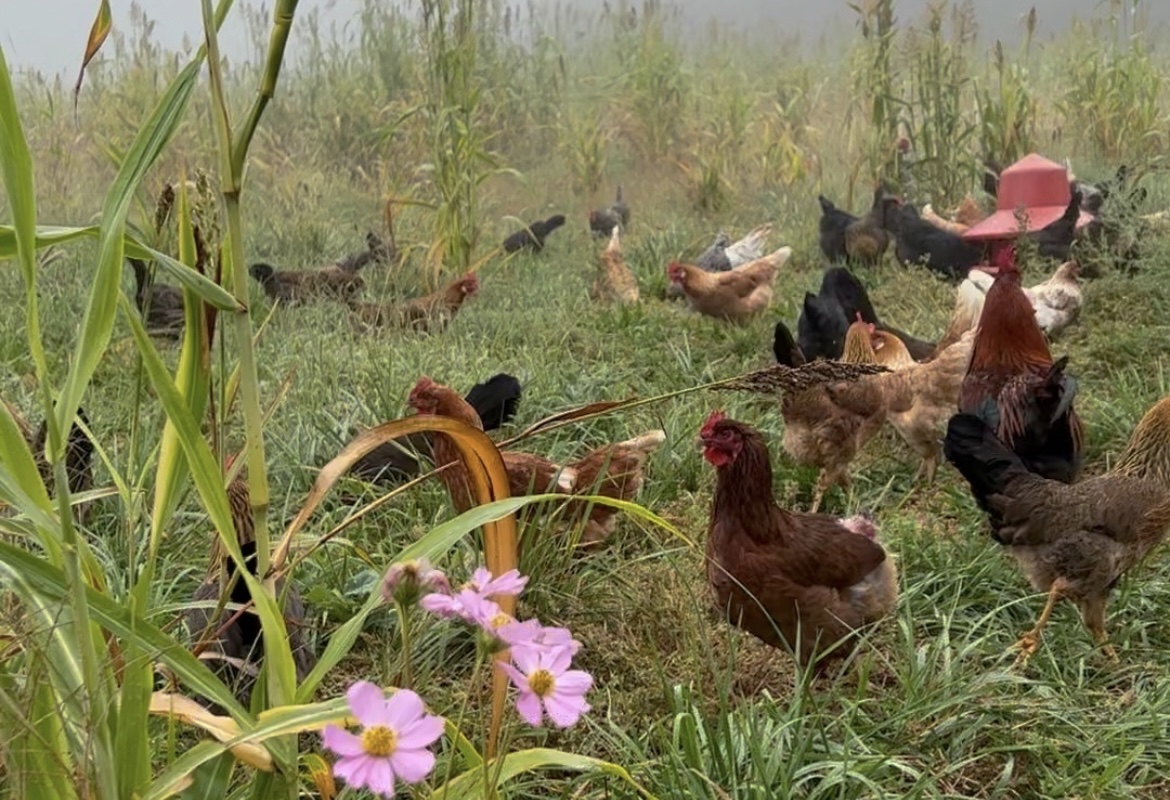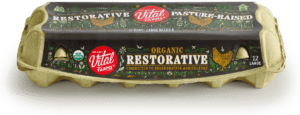
With consumer interest in regenerative agriculture greatly increasing, farmers are wondering where the bridge lies that connects those consumers to the producer and more importantly, how can the farmer be compensated for management practices that regenerate soil health and biodiversity?
According to research done by SPINS, sales of regenerative products have been growing by more than 20% in the past year. Another study from NIQ shows that 54% of consumers are curious about trying regeneratively grown products and 75% of consumers are looking for certification. While this is great news for the regenerative movement, there are still many unknowns when it comes to defining regenerative agriculture in a way that considers individual farm context while still being easily digestible for consumers.

The above photo was taken on January 12, 2024 in Whole Foods in Los Angeles. The QR code takes consumers to Whole Foods’ Commitment to Regenerative Agriculture.
With ample opportunity for greenwashing in grocery aisles, certification seems to be a viable option for verifying regeneratively grown products for consumers and ensuring that premiums end up in the pockets of farmers for their efforts. Many third party certifying organizations are working to bring transparency and traceability to the supply chain. Regenified, a certifying body co-founded by Gabe Brown, is one of three regenerative certifications approved for product labeling at Whole Foods. Vital Farms recently released an Organic Restorative egg with the Regenified seal. The certified product quickly reached top ten SKUS at Whole Foods shortly after its launch, despite having a price tag of $10.99 for one dozen eggs. The eggs can be traced back to just four individual farms.

Another opportunity for brands to create transparency for customers is through telling the story of regeneration to consumers so that they may make informed decisions based on management practices. A great example of this is The North Face’s film, Groundwork, which features the Kahle family who have farmed in Oklahoma for six generations. The 15 minute film brings the viewer through the hardships and realities of farming, illustrating regenerative agriculture as a beacon of hope. For the Kahles, shifting from conventional farming practices to regenerative agriculture has taken courage, but they believe it could be the key to restoring the health of their soil and the health of their family.
With consumer interest on the rise, we will continue to see retailers and brands working to verify and market regeneratively grown products. At Green Cover, we’re interested in facilitating education and conversation around this topic. By hosting farmer focused events, we have the unique opportunity to bring in sponsors who hope to actively engage in conversations around regenerative product sourcing. By bringing both the brands and the farmers into the same room, we give farmers the opportunity to ask important questions about transparency and price premiums for their regeneratively grown products. Brand representatives also get the opportunity to listen to the nuance and complexity of farming regeneratively.
We would like to say thank you to our sponsors at The North Face, Vans, The Nature Conservancy, Green America, Unilever, Bimbo Baker, and Ahold Delhaize for helping us put on the Regenerative Nexus Summits. Special thanks to Regenified for contributing key market insight and data to this conversation.
If you are on the path of regenerative agriculture and are interested in attending a unique producer-focused event for regenerative agriculture practitioners, reach out to shelby@greencover.com for more information on the Regenerative Nexus Summits and we would be happy to follow up with you.
This article first appeared in our “Keepin’ You Covered” email newsletter where we share 1 soil health topic, 2 success stories and 3 learning opportunities.
If you’re excited to learn more, sign up for our bi-monthly newsletter here.